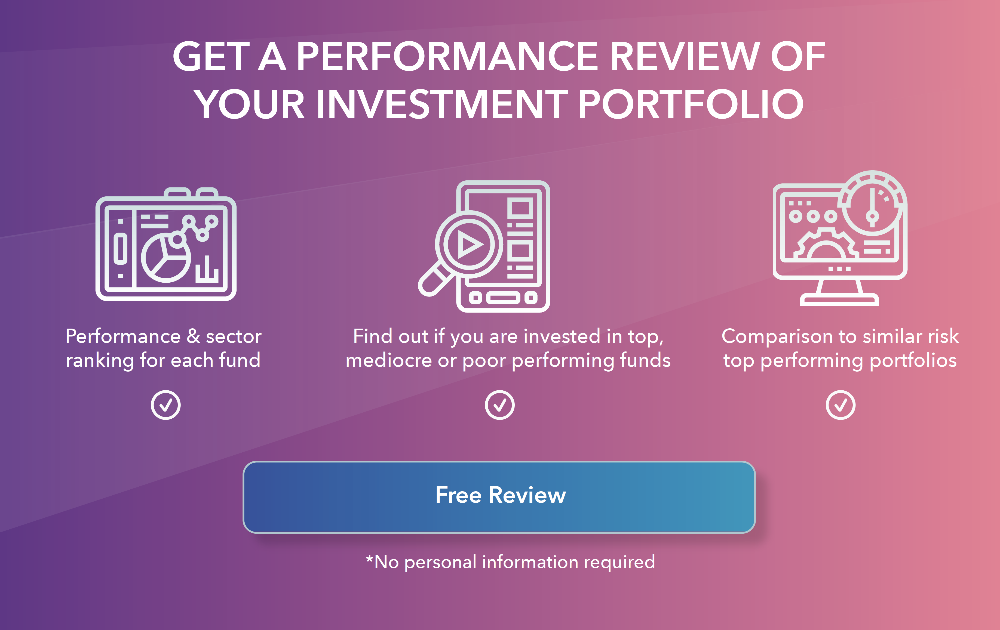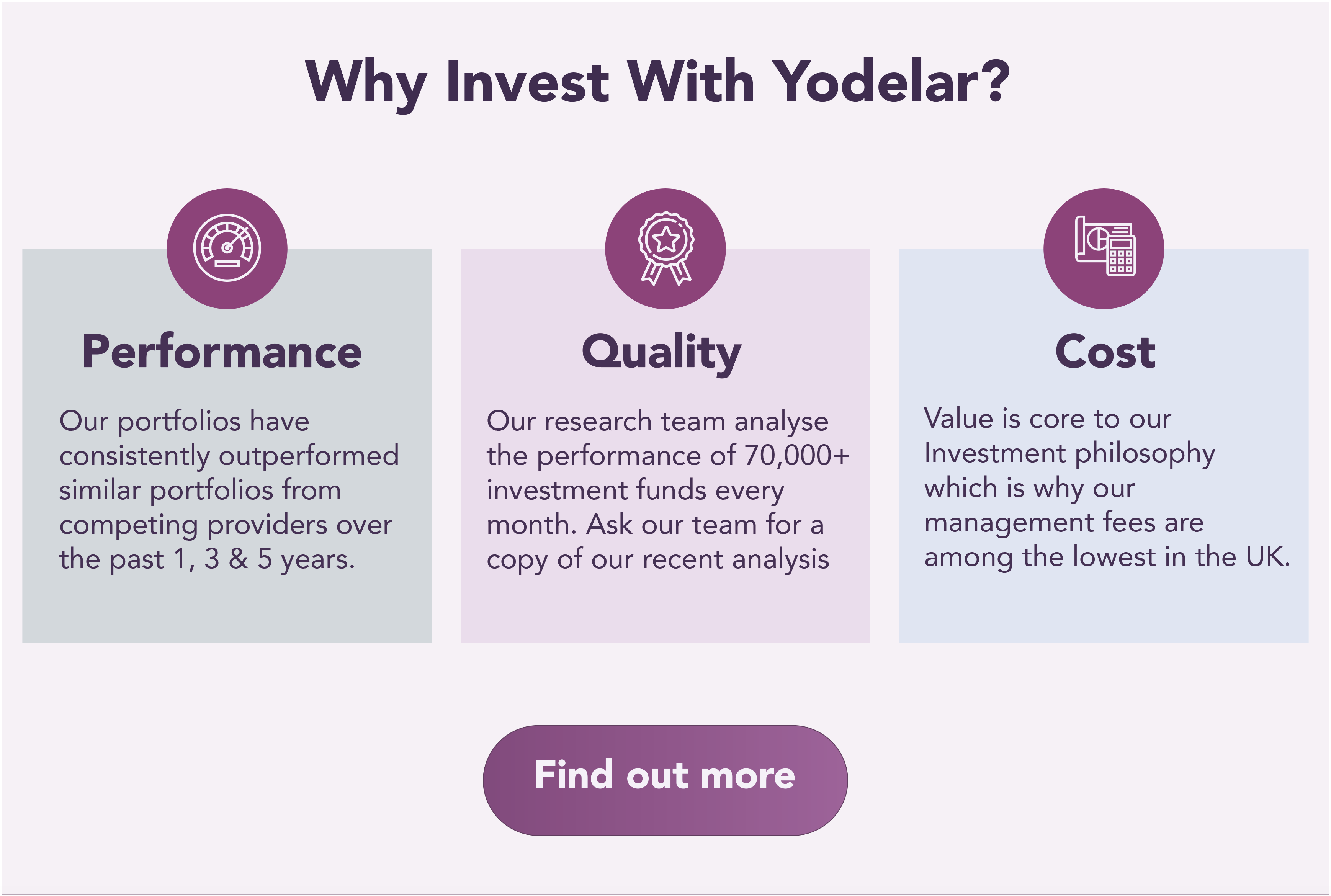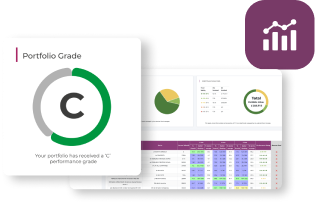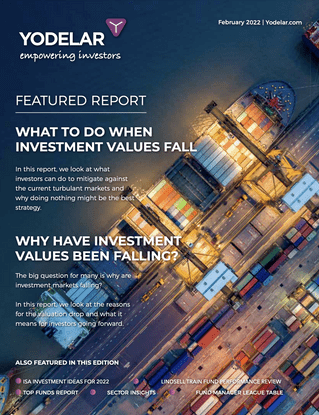When ISAs were first introduced in 1999 by the then chancellor, Gordon Brown, they had a maximum allowance of £7,000. Now the allowance is £20,000 and currently more than 11 million UK investors are sheltering in excess of £67.5 billion in tax efficient ISA accounts.
With the deadline for this year’s ISA investment approaching, it’s one of the busiest times of the year for investors with as much as half of all ISA investments occurring in the last three months of the tax year and 15% in the final two weeks alone. But not all of those invested in ISAs are making their money work as efficiently as it could, and many will make ISA decisions this year without a suitable strategy.
In this report, we share 5 tips for improving your ISAs and making better ISA investment decisions. These tips apply to your existing/previous ISA investments as much as your new ISA contributions.
ISA Basics - Why You Should Invest In An ISA
Think of tax as a cost. Like any other cost, it eats into your investment returns, slowing your progress towards your goals. But the government waives this cost if you invest in an ISA, as you can contribute up to £20,000 in an ISA each year tax free.
Any income you take from the gains you secure through your ISA, whether from a dividend, from a share, or interest from a bond, is tax free. Of course, your ISA investment will grow more quickly if you reinvest this income, and as those tax savings will compound year after year, it will make your savings even more valuable.
With ISAs, your capital gains are also tax free. This means you don’t pay any tax on profits you may make on your investments. No tax means higher returns, which means you have a better chance of reaching your goals more quickly.
You don’t pay any tax on any withdrawals from your ISA, whether that's in the form of a one-off purchase, or from drawing a regular income. The tax benefits obtained from Investing in an ISA makes it an excellent product that new investors should utilise and existing investors should optimise.
ISA Basics - The Options Available
An Individual Savings Account (ISA) is a special type of tax efficient account. There are different types of ISAs and the annual allowance is currently £20,000 for the 2020/21 tax year.
You are not allowed to put money into more than one of the same type of ISA in the same tax year and the allowance cannot be carried forward to the next tax year so it is important to use as much of it as you can each year.
There are 5 main different types of ISAs that are available in the UK.
Cash ISA
Cash ISAs are available to anyone over the age of 16 and are similar to a standard bank or building society account. The key difference with a cash ISA is that any interest earned within the ISA is always tax-free.
Stocks and Shares ISA
A stocks and shares ISA allows you to invest your money across a variety of markets and sectors, offering wider investment opportunities and potential for growth when compared to a cash ISA. All income and growth within a stocks and shares ISA is tax-free.
Lifetime ISA
A Lifetime ISA or LISA is open to individuals aged between 18-40. It’s aimed to help younger savers accumulate a deposit for their first home or for people looking to save for later life.
You can contribute to it up until your 50th birthday and you can opt to save into stocks and shares, cash or a mixture of both. The annual LISA limit is £4,000 and the government will add a 25% bonus to the amount you save. The bonus will be added to your LISA the month after the deposit.
If you do not use your LISA for a home deposit, you can access the funds penalty-free from your 60th birthday.
You are still able to access your LISA funds before you turn 60, but unless it is for a first house deposit you will pay a 25% withdrawal penalty, in effect losing the government bonus and some more, so you must be content to lock your money away for a significant length of time.
Both the LISA and the H2B ISA (Help to Buy) offer the 25% government bonus and the chance to accumulate a deposit for your first home. The H2B ISA is no longer available for new subscriptions.
However, the bonuses are added in a different way and you can only use the 25% bonus from one of these vehicles to buy your first home.
Junior ISA
Junior ISAs or JISAs were introduced in November 2011, replacing the Child Trust Fund.
A Junior ISA can be opened at birth and is controlled by a parent or guardian until the child turns 16. You can invest the annual allowance into stocks and shares, cash or a mixture of both. You cannot make payments into stocks and shares JISA and a cash ISA in the same tax year. The current annual allowance is £9,000.
NB: Any child holding a Child Trust Fund (CTF) can’t have a JISA opened for them unless the CTF is first transferred to a JISA and the CTF closed.
Innovative Finance ISA
An Innovative Finance ISA or IFISA are designed to enable those who are interested in peer-to-peer lending to do so via an ISA wrapper. Any interest payments and capital gains can grow tax-free.
These are complex products with significant risks attached and will not be appropriate for everyone.
5 Tips For Your ISA Investments
Each type of ISA offers tax free benefits, but for investors who wish to not only protect their savings against tax but target growth of these savings, a stocks and shares ISA provides the best opportunity for ISA growth.
But for many investors who use stocks and shares ISAs their portfolios can lack efficiency because they contain underperforming funds and/or the asset balance is out of sync which can significantly impact on their long-term investment objectives.
Below, we feature 5 tips that can help investors get the most from their ISAs.
-
1. Identifying The Best Funds To Build A Robust and Top Performing ISA Portfolio
Although market movements dictate investment growth not all funds are able to consistently maximise growth during fluctuating periods. Indeed, a large proportion of funds simply achieve growth through the performance of the market - when a market is thriving they benefit from easy gains but when the market is struggling they are unable to maintain those gains.
However, like any industry there are those who simply do a better job than others and with investing there are a proportion of funds available that regularly demonstrate exceptional performance.
We believe that fund performance is a critical metric that efficient investors and high-quality advice firms analyse to help ensure their portfolios productively meet objectives while utilising the proven top-performing fund managers.
Although future performance is never guaranteed it is reasonable to assume the funds which have proven their consistency over a 5-year period, will continue to outperform their peers in the future. These individual fund managers demonstrate a consistency in their ability to do their job well.
Selecting funds that consistently perform better than their peers and fit within a suitable asset allocation model will help investors to maximise their portfolio growth potential.
If using a financial adviser to build and manage your ISA, make sure that you are partnered with someone that has performance knowledge and who can demonstrate that easily. As fund performance is not a regulated requirement of financial planning, financial advisers are not required to research the performance of funds. As a result, a large proportion of advisers have a poor level of knowledge in relation to fund performance. By ensuring your portfolio contains only consistently top-performing funds, within an asset allocation model suitable to your risk profile, you have covered the 2 main aspects of maintaining an efficient portfolio.
2. Make Sure To Diversify Your ISA Portfolio
No single equity style, sector, country or region outperforms all others all of the time. Global diversification spreads risk amongst countries and currencies to offset the risk of investing in just one region or country. As such, having a globally-diversified ISA portfolio is vital to long-term investment success.
Being able to spread your risk across various countries shields investors from country-specific conflicts and regulations. In this way, if one country struggles economically due to regional issues, your portfolio will feel that it affects less.
It’s nearly impossible to pick and choose which asset classes will be top performers at any given time. While one particular market may outperform others one year that doesn’t mean it will continue to do better than others over the long-term.
Nobody knows with any degree of certainty what asset classes and global markets will be the best performers next year. Therefore, the most efficient way for investors to capture the returns of the markets is to invest with diversity and spread their portfolios assets.
-
3. Choose Quality Over Cost
Investing by definition is about putting money to use by purchase or expenditure, in something offering potential profitable returns - Yet for some investors, growing their money is not the primary driver in their investment decisions.
In recent years in particular, the cost of investing has become more influential, with some investors focusing more on how much they can save in fees compared to the quality of investment products that offer the best potential for returns.
Such an approach can prove to be costly resulting in investors missing out on returns that significantly outweigh the savings from investing in low-cost portfolios.
Each sector will have consistently top performing funds when compared to all same sector funds. Those that prioritise experience and consistent performance first, and cost to invest second make use the better performing competitive funds, and generate better returns.
To achieve maximum efficiency from your portfolio it is important to distinguish the value between a high quality, possibly more expensive product, to that of a lower priced poor performing alternative. Cost and growth must be a balanced assessment based on factual information.
Deep Rooted Flaw of Low-Cost Models
It is also important to recognise that low-cost portfolio providers are forced to maintain their low fee structure in order to maintain the viability of their business. As a consequence, they are forced to overlook many high-quality funds that do not fit their cost structure in favour of lower-priced, and often lower growth alternatives.
When it comes to investing, cost will and should always be an important consideration, but it should never be the dominant factor. Investing is about growth and although many low-cost portfolios do just that, they have a deep-rooted flaw that will always limit their potential. As a consequence, the real value from investing is not in the short term gain from saving on fees but from the long-term value of investing in portfolios that focus on quality.
4. Balance Quality Funds & Asset Allocation
The balance of investments across different asset classes is the primary driver of portfolio returns, but the funds used to create the correct balance are essential to maximising portfolio growth and efficiency. This is core to the strategy of Yodelar Investment portfolios.
For example, a fund manager might take on a strategy favouring particular industry sectors over others when constructing their fund. Even though the fund might invest primarily in industries such as travel or tourism it can have the same sector classification as a competing fund which has a similar asset class but instead the fund manager might prefer to hold greater weighting in technology or healthcare companies.
The outcome can be significant and one that can see a fund rank highly within its sector or one that sees the fund languish among the worst performers.
Formulating the appropriate blend of investment funds to fit your ISA portfolio’s specified asset allocation model and optimise growth potential is a complex process that requires thorough analysis. It is an important part of our investment committee’s strategy and one which we believe provides investors with optimal investment portfolios for all market conditions.
-
5. Don’t Sacrifice Balance For Growth
Many investors spend substantial time defining their investment goals and selecting an asset allocation to help them achieve those goals while also being mindful of their tolerance to risk. To meet their objectives they must be able to stick with an appropriate investment plan in all kinds of markets.
But for some, the lure of performance can lead them to make investment decisions that can have huge implications. For instance, when a particular sector such as the North American or the Technology sectors performs strongly, investors without a disciplined strategy may be tempted to abandon their asset allocation model to increase their exposure to these markets. But such an approach makes investors vulnerable to a market correction, which could have a huge impact on their chances of meeting their financial goals.
Having An ISA Portfolio That Suits Your Needs
Our research has identified that the majority of investors are missing out on extra portfolio growth due to subpar fund choices and general inefficiencies in their portfolio. Inefficient investing will undoubtedly have adverse long-term consequences, which is why it is so important to be able to identify and correct any portfolio deficiencies.
Investing is about maximising returns within an acceptable level of risk and Yodelar portfolios are designed to deliver just that. They have been built to follow the asset allocation model as defined by the UK's leading asset allocation and risk profiler and contain a blend of consistently top-performing funds whose weighting has been balanced to make efficient use of their underlying assets.















